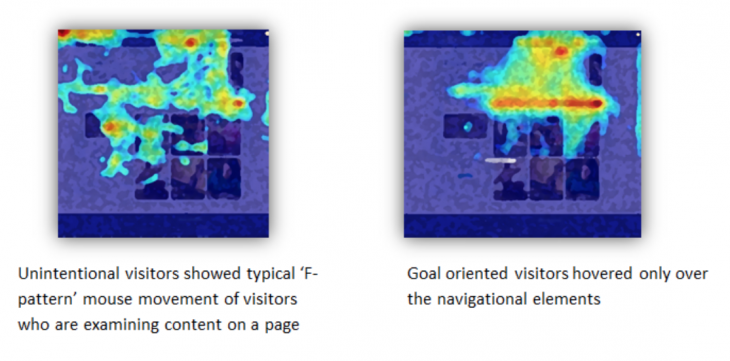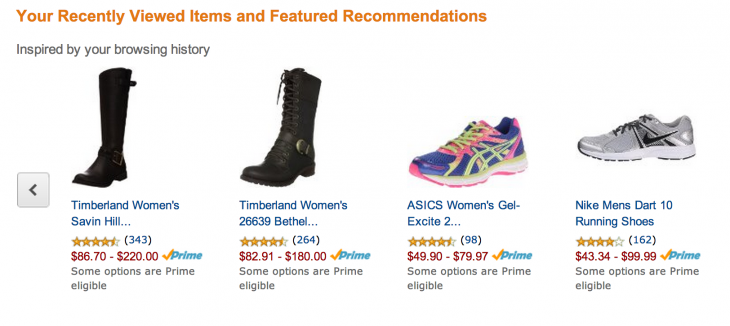
Dr. Liraz Margalit is the Customer Experience Psychologist at ClickTale. This article was co-written with Udi Zisquit.
After a long day at work, people often find themselves in need of a mental break, and one of the most popular ways to relax in the 21st century is to immerse oneself in digital media.
This mental escape from the “here and now” into the online world is mediated by cognitive modification; as the task guiding our behavior changes, the human mind is trained to automatically change the route by which it processes information – from strenuous mental effort to passive absorption of our surroundings.
This automatic modification occurs without conscious awareness and can be explained by the Elaboration Likelihood Model (ELM).
The ELM, suggested by Petty and Cacioppo, describes two routes for processing information: central and peripheral. The factors that influence which route will be activated are motivation (a desire to process the message) and ability (available cognitive resources).
The central route is taken when one is motivated to generate thoughts in response to substantive content (a shopper wishes to compare the prices of similar products) and has the ability to do so (is not mentally tired).
The peripheral route is taken when one is unable or unwilling to execute the cognitive assignment (no matter how much a shopper wishes to dig into the details of a specific product, he is just too mentally exhausted to do so).
This theoretical model is supported by the discernible differences we’ve witnessed between goal-oriented visitors who visit a website for a specific reason and unintentional visitors who are just passing time, checking out what a website has to offer and hoping for entertainment.
One of the recent analyses we conducted perfectly demonstrates the distinctive patterns of behavior between these groups. The first group comprised visitors who arrived intentionally at a sub-section of the site by using the site’s primary navigation elements.
The second consisted of visitors who arrived at that sub-section simply because they were automatically redirected there after watching a video on the homepage.
The differences in behavioral patterns were unquestionable. Goal-oriented visitors completely ignored the page’s featured elements and went directly to the navigational elements, such as the Search box and the “Browse Alphabetically” menu that showcased the site’s assets – the central route was activated.
Visitors who were automatically redirected to the page, however, leisurely examined the featured articles and images, showing interest in colorful and captivating images, basically ignoring the informative text and demonstrating no interest in the Search box – the peripheral route took control.
When we analyzed the behavioral patterns of each group, we uncovered a number of significant differences:
- Unintentional visitors were engaged with the page three times longer than intentional visitors
- Unintentional visitors scrolled all of the way down the page; goal oriented visitors did not
Mouse movement:
- Unintentional visitors were intrigued by evocative keywords like “temptation,” “adultery” and “shocking,” while goal-oriented visitors were less susceptible to sensational language
- Unintentional visitors viewed an average of eight pages on the site while goal oriented visitors viewed far fewer pages and spent much less time on the site
- Goal oriented visitors’ next pages consisted of a series of search results (their first search attempt never proved effective, indicating a poor search engine for goal-oriented visitors), while unintentional visitors mostly clicked through to the featured content
Optimizing your site for goal-oriented visitors
When your visitors are willing to dive deeply into the information process (high levels of motivation) and are equipped with the necessary cognitive resources (ability), they will focus all their attention on the process.
This means that they will ignore distractions (commercial ads will be broadly ignored, featured elements will go unnoticed, etc.), take the minimum steps necessary to reach their goal, and rely on as much information as they can retrieve.
You can convert these visitors by providing navigation tools and search abilities that allow them to complete their tasks as quickly and easily as possible. It is also crucial that you equip goal-oriented visitors with all the information they need to make a calculated decision – including customer reviews, easy access to website assets, and even information from other websites.
Optimizing your site for unintentional visitors
When visitors are unwilling or unable to process the featured content, they subconsciously use simple rules of thumb called heuristics to infer the validity of the content they are exposed to.
Examples of such rules might include: “Messages with many arguments are more likely to be valid than messages with fewer arguments”; or “A message coming from a man dressed like a doctor may seem more valid than the exact same message coming from a guy in shorts.”
In addition, due to emotion-based processing, these visitors will pay attention to colorful images, embedded video, attractive headlines and catchy slogans. In order to appeal to these visitors, the website should be colorful and attractive, have a limited amount of information and details and use a lot of imagery and video.
Associative linkage is another winning tactic for keeping unintentional visitors engaged. In the absence of a defined goal, the visitors’ behavior can be directed by associations that link one idea to another. Associative linkage that is bound hand in hand with the visitor’s association system can greatly increase these visitors’ engagement time.
For example, visitors to sites like Buzzfeed and Facebook generally don’t have a specific goal in mind, but are looking for amusement during a work break or at the end of the day. Smart websites know how to grab these visitors for long periods of time by posting links to very similar content at the bottom of each article, leading the visitors to go from one article of interest to the next.
E-commerce sites like Amazon and half.com are also frequented by visitors just looking to kill time, and the most successful ones use mechanisms such as “Similar items” sections and “Recommended for you” pages that take into account not only the customer’s purchase history but also recent browsing activity.
Besides providing a great service, these sites leverage their visitors’ browsing mode in order to see higher sales than competitors whose sites lack such features.
In conclusion
The article differentiates between two kinds of users – goal oriented and unintentional – but the truth of the matter is that a single user can apply each of the cognitive routes alternately and even shift routes during the same visit.
As such, it is crucial that your site is optimized for both types. In the absence of sufficient levels of stimulation, unintentional visitors will get bored and move on. Similarly, a sense of disorientation can lead your goal-oriented users to abandon your site permanently.
As our digital world moves increasingly towards personalization, the ideal solution would be to meet each visitor’s needs by observing their activated cognitive route, and optimizing their experience accordingly. Until that time comes, we must optimize our websites for both cognitive paths.
Read next: The emotional involvement behind social media interactions
Get the TNW newsletter
Get the most important tech news in your inbox each week.









